Elite California Pinot Noir Vineyards Part II: North Coast - Other Appellations
“I firmly believe that vineyard work is the route to a balanced wine.”
Jeff Brinkman, winemaker at Rhys Vineyards
Devil’s Gulch Vineyard
Owners: Mark and Myriam Pasternak
Acres: 14 acres of Pinot Noir
Years planted:
1980: 3 acres of Pinot Noir (Martini 15) and 4 acres of Chardonnay (Clone 4)
1998: 11 acres of Pinot Noir (Dijon clones 114, 115, 667, and 777)
Location: Wedged between Sonoma County to the North and the San Pablo Bay to the South in the tiny town
of Nicasio in Marin County. The Devil’s Gulch Ranch abuts the 800+ acres of the Golden Gate
Recreation Area.
Aspect: Terraced blocks facing south with slopes that exceed 60% in some areas with the rest of the vineyard
straddling a ridge top. The elevation is 700 feet above sea level.
Pinot Noir scions: Martini 15, Dijon 114, 115, 667, and 777
Soil: Decomposed sandstone that provides superb drainage and a high mineral content.
Vines: Original 1980 planted has 10’ x 6’ spacing with vines on AxR1 rootstock. The 1998 plantings have 8’ x 5’
with vines on 3309 and 420A rootstocks. The original vines are cane pruned on a quadrilateral modified
Scott Henry system. The 1998 planting is all VSP trained. The entire vineyard is drip irrigated using a
two hose system to insure the vines in poorer soils receive adequate water and the vines in better soils
are not over irrigated.
Farming: Mark farms the vineyard and produces his own compost from the rabbits, pigs and sheep that he
raises on the ranch. He was one of the first in California to graze his sheep in the vineyard during the
winter, a trend that is more commonplace now. He has also used his chickens to reduce the cover
crop. Although he is an advocate of organic farming, he has found it necessary to use Roundup
sparingly for weed control due to the steepness of the vineyard. The rest of the foliate spray program
is done using organic materials.
Winery clients: Dutton-Goldfield and Sean Thackrey (Hartford Court, Kalin, and Schramsberg in past).
Comments: The extremely mild and lengthy growing season is conducive to growing Pinot Noir but rain in the
spring is common so that yields can be low. The risk of rain and fungus at the end of the long growing
season can also severely reduce yields. Mark has managed or consulted on all or nearly all the
vineyards in Marin County for many years. My last review of Sean Thackrey Andromeda Devil’s Gulch
Ranch Marin County Pinot Noir was the 2015 vintage when my August 6, 2017 notes say,
“Commendable balance with a density that does not sacrifice charm. A truly unique wine from a
challenging site crafted by a contemplative winemaker”. Score 95. Dan Goldfield crafts’ one of
California’s greatest Chardonnays from this vineyard.
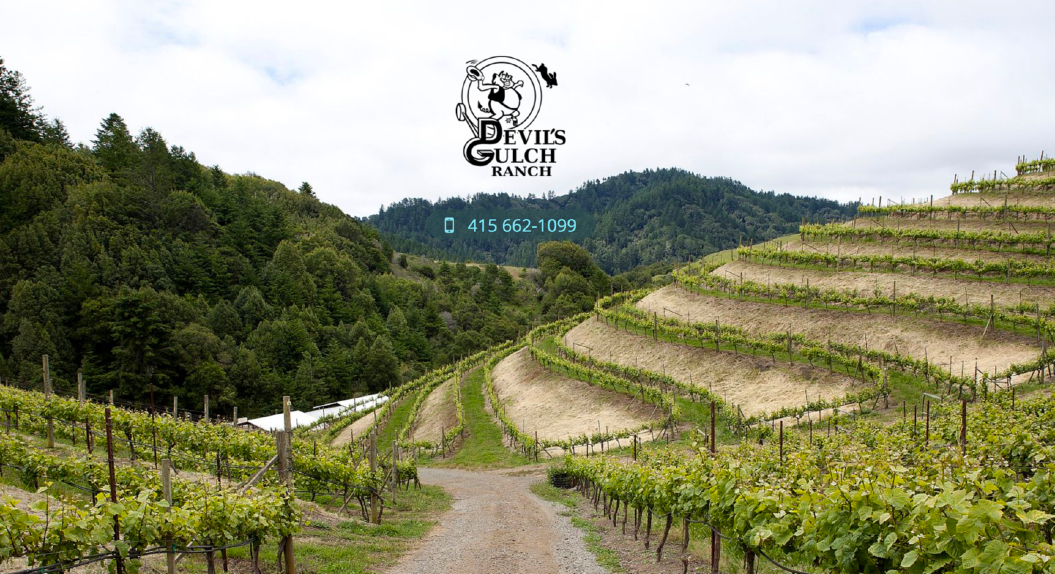
2018 Dutton-Goldfield Devil’s Gulch Vineyard Marin County Pinot Noir
13.8% alc., $72.
·
Moderate garnet
color in the glass. The seductive perfume of Pinot Noir is difficult to capture but this wine has it. Aromas of
black cherry, black raspberry, blueberry, sweet mulch and tilled earth. Very polished and refined on the palate,
with a discreet concentration of dark cherry and raspberry fruit with both a floral and earthy accent. Oak lends a
complimentary hand. Exquisite balance with a prolonged finish. When tasted the following day from a
previously opened bottle, the wine soared to new heights, the spiciness was unreal, and the wine became
better and better over time in the glass. Angel sent.
Score: 96
More reviews: www.princeofpinot.com/vineyard/124/.
Donum Estate Vineyard
Owner: With the divorce of Anne and Markus Moeller-Racke and the sale of Buena Vista to Allied Domecq in
2001, Anne split off 147 acres of the Buena Vista Estate, retaining Tula Vista Ranch that she first
planted in 1989-1990 and renamed the property Donum, Latin for “Gift of the Land,” Estate. The Donum
Estate was sold to Winside, Inc. in late 2011, a partnership of Danish investors led by Allan and Mei
Warburg. Anne left Donum Ranch in the summer of 2019.
Acres: 91 (82 acres of Pinot Noir and 9 acres of Chardonnay). The original planted 45 acres was formerly the
Tula Vista Ranch of which 5.5 acres was Pinot Noir and this block has gone into the West Slope bottling
of Pinot Noir. Donum also owns a 16-acre vineyard in the Russian River Valley and a newly acquired
and newly planted 20-acre vineyard site in Bodega, adjacent to Benziger’s de Coehlo Vineyard.
Years planted:
1985-1989: a 40-acre plot that has now been replanted.
1989-1990, 2013, 2016, and 2018: about 10 acres of the 1980 plantings of Pinot Noir remain.
Location: Sonoma Carneros region just north of San Pablo Bay (Carneros AVA)
Aspect: Moderate slopes of three hills with much of the vineyard either west or east facing.
Pinot Noir scions: Heirloom selections including the Donum selection that is presumably a Roederer
selection, Chalone selection, Hanzell selection, Swan, Calera, Pommard and Wädenswil clones, and
Dijon clones 115, 667, and 777.
Soil: Heavy clay content with a mix of clay loams, with some areas having sand in the subsoil.
Vines: Mostly 7’ x 4’ spacing with some 8’ x 4’. All blocks except West Block are two-cane VSP trellised while
the West Slope block is on a tow-arm cordon.
Farming:Organic methods and biodynamic processes since 2020. Organic certification with CCOF is
expected in 2022 at which time Donum Estate will become Sonoma County’s second largest organic
vineyard owner and the largest organic vineyard on the Sonoma side of Carneros.
Winery clients: Donum Estate Pinot Noir grapes have been sold to Cattleya Wines and La Rochelle as well as
bottled under the Robert Stemmler label in the past.
Comments: A stunning collection of contemporary sculpture is placed within the vineyards. The West Slope
bottling since 2007 comes from a 5.5-acre plot planted to the Donum selection and is the culmination of
the search for the top Pinot Noir terroir in Carneros. The White Barn bottling comes from a block of
Wadenswil clone next the the estate’s white barn. The Mikado Tree bottling since 2017 comes from a
block of Swan clone. Additional Pinot Noir bottlings include Three Hills and Carneros Estate. The
Ferguson Block adjacent to the Donum Estate was planted by Thomas Ferguson to the Martini clone in
1974. The grapes were sold exclusively to the Donum Estate and the resultant wine was labeled as
“Thomas.” The vines were pulled out in 2016 and Thomas Pinot Noir was no longer produced. The
Ferguson Block Vineyard was bought by Donum Estate, replanted in 2018-2019, and the grapes are
incorporated in Estate Pinot Noir bottlings. An estate winery on the vineyard property opened in 2019.
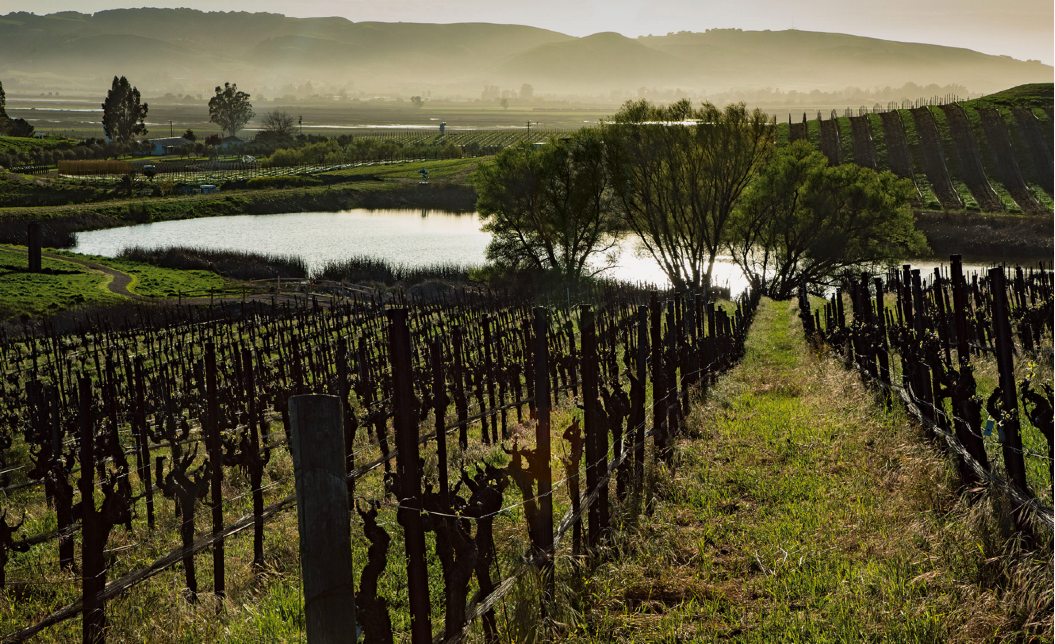
2017 Cattleya Belly of the Whale Carneros Pinot Noir
14.2% alc., 78 cases, $70. Roederer clone from the
oldest part of the Donum Estate Vineyard.
·
Moderate garnet color in the glass. Clean and spirited aromas of
fresh cherry, pomegranate, rose petal, sous bois, s’mores and cigar. Robust, virile, and fruit-driven, featuring
deep, flamboyant flavors of black cherry and blackberry that flood the palate with goodness. Full-flavored, yet
has welcome finesse and a silken mouthfeel. The felty tannins fit right in,, the vibrant acidity elevates, and a
sneaky hint of savoriness peaks one’s interest. Reviewed June 4, 2019.
Score: 93
2018 Donum Estate Single Vineyard Year of the Dog Carneros Pinot Noir
14.5% alc., $80.
·
Dark garnet
color in the glass. Highly aromatic, with scents of fresh boysenberry, spice, cinnamon and dark chocolate
cocoa. Oak-kissed fruit flavors of boysenberry, blueberry-pomegranate and blackberry in a mid-weight plus
style showing modest tannins, a silken mouthfeel, and good length on the finish that reveals the slightest sense
of alcoholic heat.
Score: 92
2018 Donum Three Hills Single Vineyard Carneros Pinot Noir
14.1% alc., $85
·
Moderately dark garnet
color in the glass. Complex nose exhibiting aromas of purple berry, violets, underbrush, mocha and a hint of
toast. Like mother’s milk, the velvety texture is extremely pleasing. Middleweight in concentration, with
immersed tannins and a compliment of oak. Overall, admirable balance, ending with excellent length.
Score: 93
2018 Donum West Slope Single Block Reserve Carneros Pinot Noir
14.5% alc., $125.
·
Moderately dark
garnet color in the glass. Very earthy nose with aromas of damp soil, mushrooms on the grill, mocha and
molasses. Packed in with a delightful core of purple berry fruit in a boulder expression of Pinot Noir. Creamy in
texture, with a honed tannic backbone, a shadow of oak, and finishing remarkably long. Surely, the most longlived
of the 2018 Donum Pinot Noirs tasted on this occasion.
Score: 94
More reviews: www.princeofpinot.com/vineyard/606/.
Etude Estate Vineyards at Grace Benoist Ranch
Owner: Tony Soter founded Etude Winery in 1982 and sold the winery to Beringer Blass (Fosters Wine
Estates) in 2001. Soter had envisioned planting Pinot Noir at the Grace Benois Ranch, but Beringer has
acquired the property and first planted vines there.
Acres: A 1,250-acre ranch with 158 acres of Pinot Noir assigned to Etude Winery.
Year planted: 2000 (?). Pinot Noir first came into production in 2002
Location: Far northwest corner of the Carneros AVA at the southern tip of Sonoma Mountain on Cuttings
Wharf Road. Grace Benoist (pronounced “ben wah”) Ranch is situated on the Sonoma side of Carneros
and borders part of the Durrell Vineyard.
Aspect: Exposed to the cooling effect of fog and maritime breezes that travel in from the Pacific via San
Pablo Bay and the Petaluma Gap. A rambling tract of grazing land with the Rodgers Creek Fault Line
located a few hundred feet west of the Ranch and the Bennet Valley Fault Line underneath the
property.
Pinot Noir scions: 6 acres of heirloom selections (mainly Swan, Chalone and Calera selections) planted at
Grace Benoist Ranch using cuttings from Etude’s original heirloom selection program, plus Dijon
clones 114, 115, 113, 667, 777, and Pommard 5, and Martini 13 clones.
Soils: Three distinct types: (1) Petaluma Formation of coarse sand and gravel deposited by a system of rivers,
lakes, and streams, (2) Sonoma Volcanics, and (3) Quaternary Unknown comprised of varying
concentrations of volcanic pebbles, cobbles, and boulders. In summary, well-drained, rocky soils of
volcanic origin that are very atypical for Carneros.
Vines: Cordon-trained on a VSP trellis. A low density planting. Rootstocks match the soil types and different
microclimates in the vineyard.
Farming: Sustainably farmed with a holistic winegrowing approach that nurtures the soil, respects the native
ecosystems, and reduces the environmental impact.
Winery clients: Beringer, and Chateau St. Jean, with the majority of Pinot Noir going to Etude.
Comments: The vineyard is divided into 24 individual blocks, averaging 8 acres in size, each with its own soil
type, rootstock, grape variety, and clonal type. There are several smaller vineyards within the Ranch
including four Pinot Noir vineyards sourced by Etude: Laniger (Dijon 115), Deer Camp (Martini 13
clone), Temblor (Dijon clones), and Heirloom. There are also 6 acres of Chardonnay, 14 acres of
PinotGris, 8.5 acres of Merlot and 2.5 acres of Malbec.
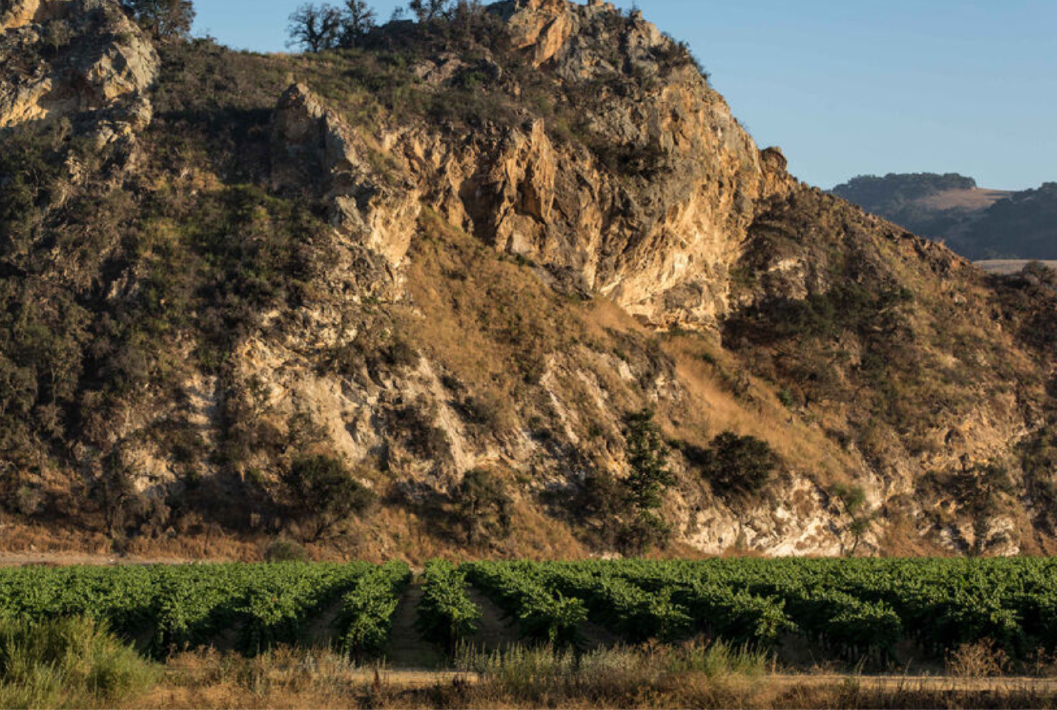
2017 Etude Heirloom Carneros Pinot Noir
14.9% alc.,$95. Composed of a diverse number of prized
heritage vines.
·
Moderately dark garnet color in the glass. The nose lacks fruit features, instead revealing
scents of earth flora and oak spice. Much more appealing on the palate with attention-grabbing flavors of black
cherry, blackberry, Dr. Pepper, tarragon, vanilla and mocha java. Admirable balance at this high ABV. Oak adds
a compliment. Moderately husky tannins show up on the extremely lengthy finish. A little more revealing and
enjoyable when tasted the following day from a previously opened bottle.
Score: 93
2018 Etude Grace Benoist Ranch Carneros Pinot Noir
14.1% alc., $46 (but can be found at retail for $36).
Composed of 16 clones and selections. A blend of the best grapes from individual parcels on the Ranch.
·
Moderate garnet color in the glass. Terrific nose that enchants with aromas of black raspberry, grape jelly and
allspice. Wow! The luscious core of purple and blackberry fruit essence really coats the palate with goodness.
Fine-grain tannins are modest, the texture is sleek, and a hint of toasty oak adds flavor. The wine exits on a
high note with bracing acidity and some length. This wine could be the best value in California Pinot Noir today
and is a consistently reliable offering in each vintage in my experience.
Score: 94
2018 Etude Laniger Vineyard Carneros Pinot Noir
14.2% alc., $85.
·
Dark garnet color in the glass. Very
appealing aromas of blackberry reduction and violets. A luxurious mouthful of plum and purple and black berry
fruits with a shadow of oak. Satisfying, with balanced tannins and a sweet-fruited finish with some length.
Score: 92
2018 Etude Deer Camp Vineyard Carneros Pinot Noir
14.2% alc.,$85.
·
Dark garnet color in the glass.
Pleasant aromas of dark berries and dark rose petal. Full-bodied in style, exhibiting a rush of boysenberry,
black cherry, and black currant fruits with a hint of dark chocolate flavor. A voluptuous wine, yet has gentle
power and admirable balance.
Score: 92
More reviews: www.princeofpinot.com/vineyard/1707/.
Hanzell Vineyard
Owner: De Brye family since 1975
Acres: 46 planted acres on a 200-acre estate with 14.5 acres of Pinot Noir.
Years planted:
1953: Original plantings of 3 acres each of Pinot Noir and Chardonnay in The Ambassador’s Vineyard.
The Ambassador’s 1953 Vineyard, currently including 4.04 acres of Pinot Noir, is part of a vineyard
block now called Zellerbach Vineyard that also contains newer plantings of Pinot Noir. 15%-20% of the
original vines have been replanted.
1957: Additional plantings of Pinot Noir in The Ambassador’s 1953 Vineyard were grafted over to
Chardonnay in 1998.
1965-1975: Day Vineyard, 5 acres of Chardonnay
1976: de Brye Vineyard, 16 acres of Pinot Noir and Chardonnay
1999: Sessions Vineyard, 4 acres of Pinot Noir
2001: Ramos Vineyard, 5 acres of Chardonnay
Location: High above the town of Sonoma at the toe of the Mayacamas Mountain range overlooking the
southwestern end of Sonoma Valley and San Pablo Bay. A completely unique site for growing Pinot Noir
in the Sonoma Valley AVA.
Aspect: Terraced and contoured vine rows with both western and southern exposures and slopes of up to
38%. The elevation is 670-785 feet above sea level.
Pinot Noir scions: The source of the Pinot Noir planted in 1953 is not clear. Legend has it that founding
winemaker Brad Webb took cuttings on a clandestine mission to Napa from Pinot Noir planted at the
To-Kalon Vineyard in Napa that originally was sourced from Santa Cruz Mountains vintner Martin Ray.
Another more plausible version is that To-Kalon Vineyard manager Ivan Schoch, who was also the
vineyard manager for Hanzell Vineyards, selected budwood from To-Kalon Vineyard for the 1953
planting. In still another version, Schoch took cuttings directly from La Cresta Vineyard upon the advice
of A.J. Winkler. The de Brye Vineyard was planted with budwood taken from the 1953 and 1957 blocks
of the Ambassador’s Vineyard and the Sessions Vineyard was propagated from cuttings taken from the
1953 Ambassador’s Vineyard. All the Pinot Noir scion in Hanzell vineyards is a selection massale
derived from the original vines. The Hanzell clone or UCD 108 underwent micro shoot tip tissue culture
to eliminate viruses at Foundation Plant Services in 1997. A limited amount of Hanzell clone is planted
in other California vineyards.
Soils: Rocky volcanic and Red Hill clay loam with excellent drainage.
Vines: Primarily St. George rootstock. The average vine age is 35+ years.
Farming: A “Bio-farm” approach is used to limit the site’s carbon footprint. Biodynamic principles are woven in
with the goal of being 100% self-sustained. Any material brought onto the property from outside sources
is Certified Organic solely from manufacturers with strong ethical, social, and environmental platforms.
Winery clients: None, a monopole.
Comments: The Ambassador’s 1953 Vineyard contains the oldest producing Pinot Noir and Chardonnay vines
in California. Grapes from the original vines in The Ambassador’s 1953 Vineyard are typically blended
with grapes from other estate vineyards that were planted in subsequent years (De Brye, Sessions, and
Zellerbach) to produce the winery’s annual Hanzell Vineyards Sonoma Valley Pinot Noir. In 2003, 2007,
2014, and 2018 Hanzell bottled a Pinot Noir solely from the original vines and labeled the wine Hanzell
Vineyards The Ambassador’s 1953 Vineyard Sonoma Valley Pinot Noir (only made available to
certain wine club memberships. In the 2018 vintage, a Hanzell Farm The De Brye Selection Pinot Noir
was offered in both a 100% whole cluster and 100% de-stemmed version. A second Pinot Noir label
produced annually, Sebella, is moderately priced ($45), and includes grapes sourced from other
vineyards.
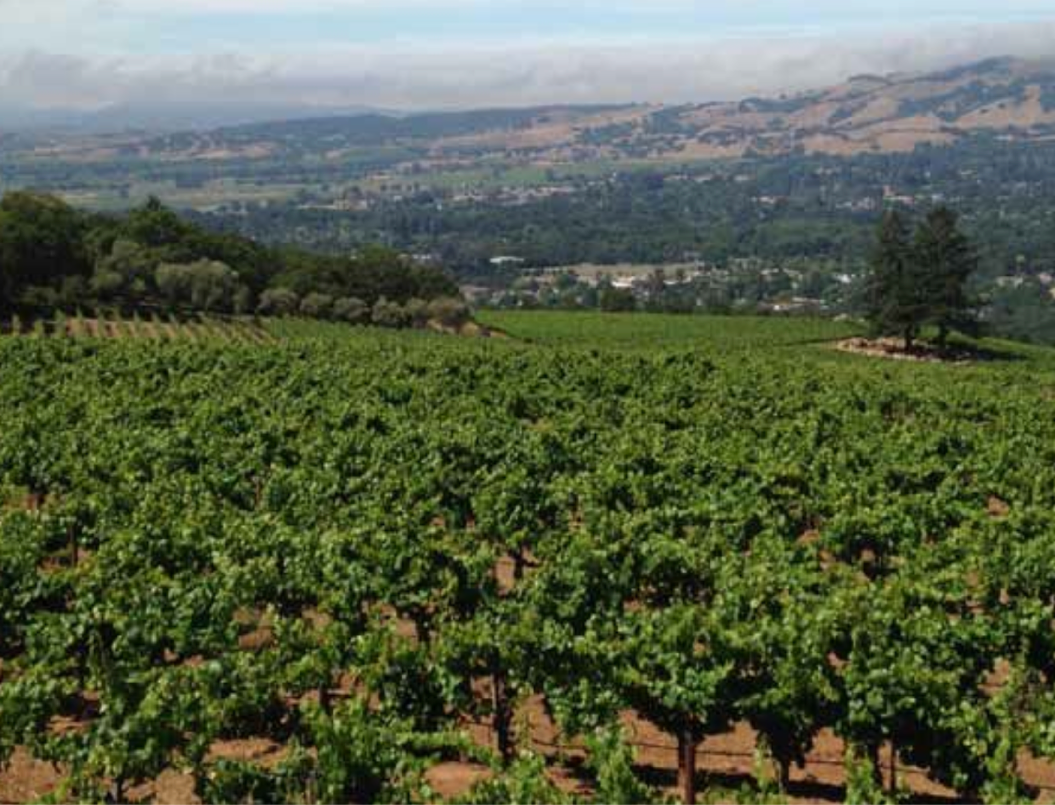
2014 Hanzell Sonoma Valley Pinot Noir
13.8% alc.
·
Light garnet color in the glass. Wonderfully inviting nose
offering vivid aromas of dusty cherry, dark red raspberry, tilled earth and warn leather coat. Light to mid-weight
in concentration with alluring flavors of dark red cherry, raspberry, mushroom and savory spices. Drinking at or
near its apogee with soft tannins, juicy acidity and excellent length on the finish.
Score: 94
2015 Hanzell Sonoma Valley Pinot Noir
13.9% alc.
·
Moderately light garnet color in the glass. Reserved
aromas of boysenberry, black raspberry and purple grape. More richness in this vintage in a mid-weight plus
style, with a riper profile of purple and black fruits. Still very fresh, with excellent harmony and impressive
length on the generous finish. Although I am reluctant to use the term, there was definitely a mineral
component to this wine.
Score: 93
2016 Hanzell Sonoma Valley Pinot Noir
13.8% alc.
·
Aromas of dark cherry dusted with baking spices and an
earthy undertone. Very impressive in a middleweight plus style, with waves of black cherry, black raspberry,
pomegranate and spice flavors. Somewhat viscous with adroit integration of acid and tannin, really showing off
on the long, long, long finish. A stellar wine of uncommon breeding.
Score: 95
2017 Hanzell Sonoma Valley Pinot Noir
13.5% alc. $98.
·
Moderately light garnet color in the glass. More
demure in this vintage, with aromas and flavors of cherry, red berry, dried herbs and toasty oak. The slightly tart
cherry finish lacks staying power and reveals significant oak inflection. Maybe more time in the cellar may add
to the appeal.
Score: 91
2018 Hanzell Sonoma Valley Pinot Noir
13.6% alc, $98.
·
Moderate garnet color in the glass. Welcoming
aromas of cherry, baking spices and sandalwood. Very bright cherry fruit marks the entry and loaded with spice
and cola flavors expands through the mid-palate. A good cut of acidity propels the fruit through a ridiculously
long finish. Clearly, the longest finish of any wine tasted in this vertical (2014-2018).
Score: 96
More reviews: www.princeofpinot.com/vineyard/400/.
Haynes Vineyard
Owner: This property was purchased from Nathan Coombs by James Whitford in 1885. Irene Whitford
Haynes, along with her son Duncan and daughter-in-law Patricia Haynes, planted the first Pinot Noir
and Chardonnay vines. The vineyard was sold to billionaire businessman Gaylon Lawrence, Jr. for
$12.5 million in 2019.
Acres: 32 total acres with 3.5 acres of old vine Pinot Noir.
Years planted: 1966, 1997, and 1968 by Duncan and Patricia Haynes under the tutelage of Louis Martini, Jr.
Location: East of the city of Napa in the cool portion of the Coombsville AVA.
Aspect: The vineyard is open to the morning fog and buffeted by afternoon breezes from San Pablo Bay. The
marine level sinks down into the Coombsville Bowl on cool mornings and does not break up until the
afternoon, creating the mildest growing season in the Napa Valley.
Pinot Noir scion: Martini from Three Palms Vineyard cuttings. An experimental three rows of Cabernet
Sauvignon struggled to ripen in this location over a four-year period.
Soil: Volcanic, alluvial soil known as Coombsville gravelly Loam that is both well-draining and rich in minerals.
The rocky alluvial soils sit atop a porous white ash deposit that extends at least 40 feet deep.
Vines: The original Pinot Noir vines are on their own roots.
Farming: Fernando Delgado lived on and farmed the property from 1971 to 2018 and is responsible for the
longevity of the original plantings. Pruning was done for each vine individually according to its strength
and potential, choosing which canes to keep and how many canes and shoots that each vine could
grow.
Winery clients: Tulocay Winery has produced Pinot Noir from the original old vines continuously since 1975.
Tulocay is one of the very few Napa wineries that started in the 1970s and is still owned and operated by
its founding family. Ancien Wines has bottled a Haynes Vineyard Old Block Pinot Noir annually since
2012. Ancien owner Ken Bernards tediously selects every vine that is harvested for this vineyard-designate because many of the vines have suffered from virus infestation. Ken walks the rows and only
selects fruit from original and healthy vines. 2019 is the final vintage for Ancien (and I
assume Tulocay as well) since the new owner plans to start a new winery producing small-lot
Chardonnay, Pinot Noir, and Syrah beginning with the 2020 vintage. Due to the very low yields from the
old block of Pinot Noir, it may not be financially sensible for the new owner to continue to maintain the
old vines.
Comments:André Tchelistcheff worked with these grapes in the 1970s, making Reserve Pinot Noir wines
during his time at Beaulieu. Warren Winarski, who founded Stag’s Leap Wine Cellars, championed the
Chardonnay from this vineyard.
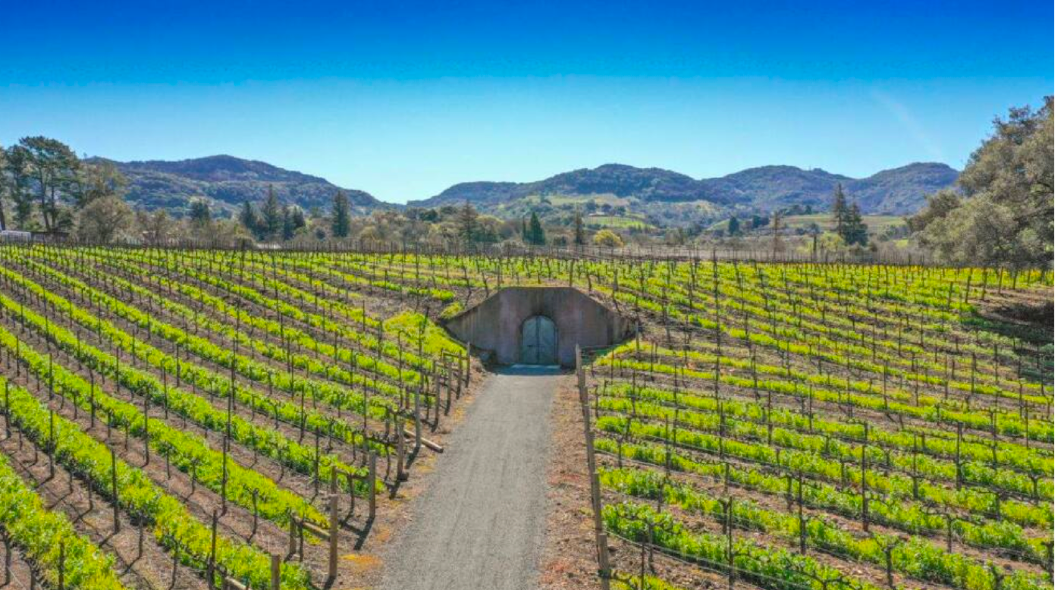
2011 Ancien Haynes Vineyard Old Block Coombsville Napa Valley Pinot Noir
14.0% alc.
·
Moderately dark
garnet color in the glass. Soaring aromas of fresh black cherry coulis, spice, cola and red rose petal. The fruit
on the nose fades some over time in the glass replaced by oak spice. Surprisingly bright and fresh flavors of
dark cherry and raspberry with a hint of raisin. An impressive aged Pinot Noir upon opening with an amazingly
long and intense finish. A lot going for it after pulling the cork but starts to fade in the glass over time.
Completely exhausted when tasted the following day from a previously opened bottle. Probably a 94 point wine
at its apogee. Drink up.
Score: NR
2013 Ancien Haynes Vineyard Old Block Coombsville Napa Valley Pinot Noir
14.5% alc.
·
Moderately light
garnet color in the glass. Demure aromas of dark cherry, red rose, baking spice and root beer. Crunchy red and
black cherry fruit in a middleweight fashion with beautiful balance. Fresh and showing no definite tertiary
character of aging. Very long on the redeeming finish. A bit faded when tasted the following day from a
previously opened bottle so drink up within five years.
Score: 92
2016 Ancien Haynes Vineyard Old Block Coombsville Napa Valley Pinot Noir
14.2% alc.
·
Dark garnet
color in the glass. Very pleasant aromas of wine cave, blackberry and pomegranate fruits and a hint of ashen
oak. Very ripe-fruited in a mid-weight plus style with flavors of black plum, boysenberry and blackberry.
Seamless with a viscous mouthfeel and only a hint of tannin. The richest wine in the Ancien Haynes vertical
tasted on this occasion but not veering to fruit compote. When tasted the following day, the nose had become
exuberant with aromas of black fruits, spice and sandalwood and plenty of Pinot fruit singing on the long finish.
Score: 93
2017 Ancien Haynes Vineyard Old Block Coombsville Napa Valley Pinot Noir
14.1% alc., 61 cases, $68.
·
Moderate garnet color in the glass. A knockout from the get-go. Large-scale aromas of black cherry, rose petal,
ground savoury spice and wine cave persist over time in the glass. Very comforting in the mouth in a midweight
style, featuring an unctuous core of cherry fruit accented with a touch of spice and complimentary barrel
presence. Softly textured, with polished tannins, welcome acidity, and good length on the lip-smacking finish.
Reviewed August 2020.
Score: 95
2018 Ancien Haynes Vineyard Old Block Coombsville Napa Valley Pinot Noir
14.1% alc., $68.
·
Moderately
dark garnet color in the glass. Spirited aromas of spiced cherry, crushed walnuts and graham. Expansive and
generous in a mid-weight style with delicious flavors of red and black cherry, cola, spice, and a hint of burnt
tobacco. Impeccably balanced and showing exceptional Pinot spirit with an ephemereal finish of uncommon
generosity and length. My notes say, “Superb in every wine with the word superb underlined six times.”
Score: 97
2016 Tulocay Haynes Vineyard Napa Valley Pinot Noir
13.7% alc., 137 cases, $40.
·
Moderate garnet color
in the glass. The nose is well-perfumed with aromas of red cherry, cardamom spice, and a hint of toasty oak.
Very suave and easily drinkable in a middleweight style, featuring a delicious core of black cherry and
raspberry fruit back by reserved tannins. This wine seduces rather than attacks the palate. The barrel
treatment is spot on and the finish is impressively long and vivid. Still superb when tasted the following day
from a previously opened and re-corked bottle. Reviewed August 2020.
Score: 94
More reviews: www.princeofpinot.com/vineyard/470/.
|